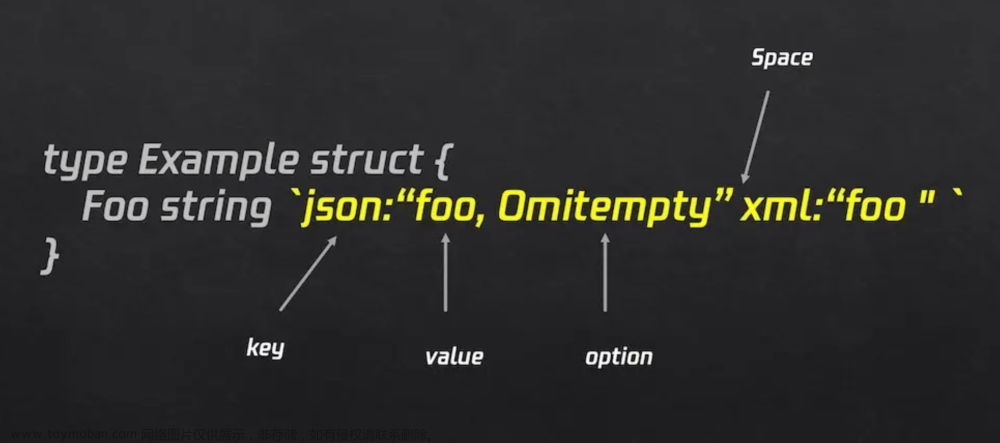加密和安全:拓展Go的加密能力与身份验证
前言
在当今信息时代,保护用户数据和网络通信的安全至关重要。为了确保应用程序和用户之间的数据传输的机密性、完整性和真实性,加密和安全技术成为开发者必须掌握的关键领域之一。Go语言作为一种强大而灵活的编程语言,提供了丰富的加密和安全功能。本文将介绍一些与加密和安全相关的Go库,帮助开发者拓展Go的加密能力和实现身份验证功能。
欢迎订阅专栏:Golang星辰图
1. crypto
1.1 介绍Go标准库中的加密包
Go标准库中的加密包(crypto)提供了多种加密和哈希算法的实现,可以用于数据加密、数字签名、哈希计算等安全操作。该包包含了对称加密算法(如AES、DES)、非对称加密算法(如RSA、DSA)、哈希算法(如MD5、SHA256)等常见的加密功能。
package main
import (
"crypto/md5"
"fmt"
)
func main() {
data := []byte("hello world")
hash := md5.Sum(data)
fmt.Printf("MD5 hash: %x\n", hash)
}
上述代码使用MD5算法对字符串"hello world"进行哈希计算,并打印哈希结果。
1.2 主要功能和用法
- 对称加密:使用相同的密钥进行加密和解密,常见的对称加密算法有AES、DES等。
- 非对称加密:使用公钥进行加密,私钥进行解密,常见的非对称加密算法有RSA、DSA等。
- 哈希算法:将任意长度的数据转换成固定长度的哈希值,常见的哈希算法有MD5、SHA256等。
- 数字签名:使用私钥对数据进行签名,使用公钥进行验证,确保数据的完整性和真实性。
- 随机数生成:生成安全的伪随机数,可用于密钥生成、密码复杂度检查等。
1.3 常见的加密算法
- 对称加密算法:AES、DES
- 非对称加密算法:RSA、DSA、ECDSA
- 哈希算法:MD5、SHA1、SHA256
1.4 示例代码和使用案例
package main
import (
"crypto/aes"
"crypto/cipher"
"fmt"
)
func main() {
key := []byte("0123456789abcdef")
plaintext := []byte("hello world")
block, _ := aes.NewCipher(key)
ciphertext := make([]byte, len(plaintext))
encrypter := cipher.NewCBCEncrypter(block, key)
encrypter.CryptBlocks(ciphertext, plaintext)
fmt.Printf("Ciphertext: %x\n", ciphertext)
}
上述代码使用AES算法对字符串"hello world"进行加密,使用CBC模式和预设的密钥进行加密操作,并打印加密后的密文。
2. bcrypt
2.1 介绍bcrypt库,用于BCrypt哈希
bcrypt库是一个用于BCrypt哈希的Go库。BCrypt是一种密码哈希算法,主要用于存储用户密码的安全哈希。它使用随机盐和递归函数调用来增加密码哈希的计算成本,以提高安全性。
package main
import (
"fmt"
"golang.org/x/crypto/bcrypt"
)
func main() {
password := "password123"
hash, _ := bcrypt.GenerateFromPassword([]byte(password), bcrypt.DefaultCost)
fmt.Printf("BCrypt hash: %s\n", string(hash))
}
上述代码使用bcrypt库对密码"password123"进行哈希计算,并打印哈希结果。
2.2 BCrypt哈希的概念和应用场景
BCrypt哈希算法使用随机盐和递归函数调用来增加密码哈希的计算成本,以提高安全性。它适用于存储用户密码,以防止明文密码泄露时遭受到攻击。
2.3 bcrypt库的主要功能和用法
- GenerateFromPassword:从明文密码生成BCrypt哈希
- CompareHashAndPassword:比较明文密码和BCrypt哈希的匹配情况
2.4 示例代码和使用案例
package main
import (
"fmt"
"golang.org/x/crypto/bcrypt"
)
func main() {
password := "password123"
hash, _ := bcrypt.GenerateFromPassword([]byte(password), bcrypt.DefaultCost)
err := bcrypt.CompareHashAndPassword(hash, []byte(password))
if err == nil {
fmt.Println("Password matched")
} else {
fmt.Println("Password does not match")
}
}
上述代码通过比较明文密码和BCrypt哈希的匹配情况来验证密码的正确性。
3. jwt-go
3.1 介绍jwt-go库,用于JSON Web Token
jwt-go库是一个用于JSON Web Token的Go库。JSON Web Token (JWT)是一种开放的标准,用于在网络应用间传递声明。它由三部分组成:头部、载荷和签名。JWT通常用于身份验证和授权场景。
package main
import (
"fmt"
"time"
"github.com/dgrijalva/jwt-go"
)
func main() {
// 创建Token
token := jwt.New(jwt.SigningMethodHS256)
// 添加标准声明
claims := token.Claims.(jwt.MapClaims)
claims["username"] = "alice"
claims["exp"] = time.Now().Add(time.Hour * 24).Unix()
// 签署Token
key := []byte("secretKey")
tokenString, _ := token.SignedString(key)
fmt.Printf("JWT token: %s\n", tokenString)
}
上述代码使用jwt-go库创建一个JWT Token,并设置标准声明(用户名和过期时间),然后使用密钥进行签署,最后打印生成的JWT Token。
3.2 JSON Web Token的概念和应用场景
JSON Web Token是一种在网络应用间传递声明的开放标准。它包含了一个基于JSON的数据结构,可以携带用户身份信息、权限信息等,用于身份验证和授权场景。
3.3 jwt-go库的主要功能和用法
- 创建Token:使用SigningMethod创建一个空的Token对象
- 添加声明:通过Token的Claims属性设置声明内容
- 签署Token:使用密钥对Token进行签署,生成最终的JWT Token
3.4 示例代码和使用案例
package main
import (
"fmt"
"time"
"github.com/dgrijalva/jwt-go"
)
func main() {
tokenString := "eyJhbGciOiJIUzI1NiIsInR5cCI6IkpXVCJ9.eyJ1c2VybmFtZSI6ImFsaWNlIiwiZXhwIjoxNjA3NzI4ODUyLCJqdGkiOiIzYTYxZDQ0MS0yMzRhLTQ5OGYtODA4ZS0wZTA0OTgxYmNjN2YifQ.M_gcMRugrvH7PjF7-u3WWnw5VUcGBkurm-_kqP_vW4c"
key := []byte("secretKey")
token, _ := jwt.Parse(tokenString, func(token *jwt.Token) (interface{}, error) {
return key, nil
})
if claims, ok := token.Claims.(jwt.MapClaims); ok && token.Valid {
fmt.Println("Username:", claims["username"])
fmt.Println("Expires At:", claims["exp"])
} else {
fmt.Println("Invalid token")
}
}
上述代码使用jwt-go库解析JWT Token,并验证签名和有效期,然后获取声明中的用户名和过期时间。
4. ssh
4.1 介绍Go标准库中的SSH包
Go标准库中的SSH包提供了SSH协议的实现,可以用于建立与远程服务器的安全连接,并进行命令执行、文件传输等操作。
4.2 SSH协议的概念和应用场景
SSH是一种网络协议,用于在不安全的网络中建立安全的连接。它通常用于远程登录和文件传输,提供了数据的加密、身份验证和安全性等功能。
4.3 SSH包的主要功能和用法
- 建立SSH连接:使用Dial函数建立与远程服务器的SSH连接
- 执行命令:通过SSH连接执行远程命令
- 文件传输:使用SCP或SFTP协议进行文件的上传和下载
4.4 示例代码和使用案例
package main
import (
"fmt"
"io/ioutil"
"log"
"os"
"time"
"golang.org/x/crypto/ssh"
)
func main() {
// SSH配置
config := &ssh.ClientConfig{
User: "username",
Auth: []ssh.AuthMethod{
ssh.Password("password"),
},
Timeout: 5 * time.Second,
HostKeyCallback: ssh.InsecureIgnoreHostKey(),
}
// 建立SSH连接
client, err := ssh.Dial("tcp", "example.com:22", config)
if err != nil {
log.Fatal(err)
}
defer client.Close()
// 执行远程命令
session, err := client.NewSession()
if err != nil {
log.Fatal(err)
}
defer session.Close()
output, err := session.Output("ls")
if err != nil {
log.Fatal(err)
}
fmt.Println(string(output))
// 下载文件
err = scpDownload(client, "/remote/file/path", "/local/file/path")
if err != nil {
log.Fatal(err)
}
fmt.Println("File downloaded successfully")
}
func scpDownload(client *ssh.Client, remotePath, localPath string) error {
session, err := client.NewSession()
if err != nil {
return err
}
defer session.Close()
src, err := session.StdinPipe()
if err != nil {
return err
}
go func() {
defer src.Close()
cmd := "scp -f " + remotePath
_, _ = fmt.Fprintln(src, cmd)
buf := make([]byte, 4096)
for {
n, err := session.Stdout.Read(buf)
if err != nil {
break
}
_, _ = os.Stdout.Write(buf[:n])
}
}()
dest, err := os.Create(localPath)
if err != nil {
return err
}
defer dest.Close()
cmd := "scp -f " + remotePath
_, err = session.SendRequest("exec", true, []byte(cmd))
if err != nil {
return err
}
buf := make([]byte, 4096)
for {
n, err := session.Stdin.Read(buf)
if err != nil {
break
}
_, _ = dest.Write(buf[:n])
}
return nil
}
上述代码使用Go的SSH包建立与远程服务器的SSH连接,并执行远程命令和文件下载操作。可以通过修改配置和调用相应的函数来实现其他的SSH操作,如上传文件、执行远程脚本等。
5. golang.org/x/crypto
5.1 介绍golang.org/x/crypto库,扩展Go的加密功能
golang.org/x/crypto库是Go语言社区维护的第三方库,用于扩展Go语言的加密功能。它提供了更多的加密算法和功能,使开发者能够更灵活地进行密码学操作。
该库实现了一系列常用的密码学算法和协议,包括对称加密、非对称加密、哈希函数、消息认证码、密码学随机数生成等等。通过使用golang.org/x/crypto库,开发者可以在自己的Go应用程序中方便地实现各种密码学操作,并保证数据的安全性。
5.2 主要功能和用法
- 对称加密:golang.org/x/crypto库提供了多种对称加密算法,如AES、TripleDES等。开发者可以使用这些算法对数据进行加密和解密,保证数据的机密性。
package main
import (
"crypto/aes"
"crypto/cipher"
"crypto/rand"
"fmt"
"io"
)
func main() {
key := make([]byte, 32)
if _, err := rand.Read(key); err != nil {
panic(err)
}
plaintext := []byte("Hello, World!")
ciphertext := encryptAES(plaintext, key)
decrypted := decryptAES(ciphertext, key)
fmt.Printf("Plaintext: %s\n", plaintext)
fmt.Printf("Ciphertext: %x\n", ciphertext)
fmt.Printf("Decrypted: %s\n", decrypted)
}
func encryptAES(plaintext []byte, key []byte) []byte {
block, _ := aes.NewCipher(key)
ciphertext := make([]byte, aes.BlockSize+len(plaintext))
iv := ciphertext[:aes.BlockSize]
if _, err := io.ReadFull(rand.Reader, iv); err != nil {
panic(err)
}
stream := cipher.NewCFBEncrypter(block, iv)
stream.XORKeyStream(ciphertext[aes.BlockSize:], plaintext)
return ciphertext
}
func decryptAES(ciphertext []byte, key []byte) []byte {
block, _ := aes.NewCipher(key)
plaintext := make([]byte, len(ciphertext)-aes.BlockSize)
iv := ciphertext[:aes.BlockSize]
ciphertext = ciphertext[aes.BlockSize:]
stream := cipher.NewCFBDecrypter(block, iv)
stream.XORKeyStream(plaintext, ciphertext)
return plaintext
}
上述代码使用golang.org/x/crypto库中的AES算法对"Hello, World!"进行加密和解密。
- 非对称加密:该库支持RSA和DSA等非对称加密算法,开发者可以使用这些算法生成和使用公钥和私钥,进行数据的加密和解密。
package main
import (
"crypto/rand"
"crypto/rsa"
"crypto/x509"
"encoding/pem"
"fmt"
)
func main() {
privKey, err := rsa.GenerateKey(rand.Reader, 2048)
if err != nil {
panic(err)
}
plaintext := []byte("Hello, World!")
ciphertext, err := encryptRSA(plaintext, &privKey.PublicKey)
if err != nil {
panic(err)
}
decrypted, err := decryptRSA(ciphertext, privKey)
if err != nil {
panic(err)
}
fmt.Printf("Plaintext: %s\n", plaintext)
fmt.Printf("Ciphertext: %x\n", ciphertext)
fmt.Printf("Decrypted: %s\n", decrypted)
}
func encryptRSA(plaintext []byte, publicKey *rsa.PublicKey) ([]byte, error) {
ciphertext, err := rsa.EncryptPKCS1v15(rand.Reader, publicKey, plaintext)
if err != nil {
return nil, err
}
return ciphertext, nil
}
func decryptRSA(ciphertext []byte, privateKey *rsa.PrivateKey) ([]byte, error) {
plaintext, err := rsa.DecryptPKCS1v15(rand.Reader, privateKey, ciphertext)
if err != nil {
return nil, err
}
return plaintext, nil
}
上述代码使用golang.org/x/crypto库中的RSA算法对"Hello, World!"进行加密和解密。
- 哈希函数:库中提供了多种哈希函数,如SHA256、MD5等。开发者可以使用这些哈希函数对数据进行哈希计算,以保证数据的完整性和安全性。
package main
import (
"crypto/md5"
"crypto/sha256"
"fmt"
)
func main() {
data := []byte("Hello, World!")
fmt.Printf("MD5: %x\n", md5.Sum(data))
sha256Hash := sha256.Sum256(data)
fmt.Printf("SHA256: %x\n", sha256Hash)
}
上述代码使用golang.org/x/crypto库中的MD5和SHA256算法计算"Hello, World!"的哈希值。
5.3 常见的扩展加密算法
golang.org/x/crypto库除了提供标准的加密算法(如AES、RSA)外,还扩展了一些常见的加密算法,如ChaCha20、Poly1305等。这些扩展算法可以提供更高的性能和安全性。
- ChaCha20:一种快速流密码算法,用于取代RC4等较为不安全的算法。
package main
import (
"crypto/cipher"
"crypto/rand"
"fmt"
"golang.org/x/crypto/chacha20poly1305"
)
func main() {
key := make([]byte, chacha20poly1305.KeySize)
if _, err := rand.Read(key); err != nil {
panic(err)
}
plaintext := []byte("Hello, World!")
nonce := make([]byte, chacha20poly1305.NonceSizeX)
ciphertext, _ := chacha20poly1305.Seal(nil, nonce, plaintext, nil, key)
fmt.Printf("Plaintext: %s\n", plaintext)
fmt.Printf("Ciphertext: %x\n", ciphertext)
}
上述代码使用golang.org/x/crypto库中的ChaCha20算法对"Hello, World!"进行加密。
- Poly1305:一种快速消息认证码算法,用于校验消息的完整性和真实性。
package main
import (
"crypto/rand"
"fmt"
"golang.org/x/crypto/chacha20poly1305"
)
func main() {
key := make([]byte, chacha20poly1305.KeySize)
if _, err := rand.Read(key); err != nil {
panic(err)
}
plaintext := []byte("Hello, World!")
nonce := make([]byte, chacha20poly1305.NonceSizeX)
mac, _ := chacha20poly1305.Sum(nil, nonce, plaintext, nil, key)
fmt.Printf("Plaintext: %s\n", plaintext)
fmt.Printf("MAC: %x\n", mac)
}
上述代码使用golang.org/x/crypto库中的Poly1305算法对"Hello, World!"计算消息认证码。
5.4 示例代码和使用案例
上述代码为使用golang.org/x/crypto库的示例,具体的使用方式和参数可根据实际需求进行调整。开发者可以根据自己的需要选择合适的加密算法和操作方式,以保证数据的安全性和完整性。
6. golang.org/x/oauth2
6.1 介绍golang.org/x/oauth2库,用于身份验证和授权
golang.org/x/oauth2库是Go语言社区维护的第三方库,用于实现身份验证和授权操作。它实现了OAuth2协议,使得开发者可以轻松地集成各种服务提供商(如Google、Facebook、GitHub等)的登录和授权功能。
OAuth2是一种开放的授权协议,允许用户授权第三方应用程序访问其受限资源,而无需直接共享其用户名和密码。通过使用golang.org/x/oauth2库,开发者可以在自己的Go应用程序中实现OAuth2的客户端功能,通过与授权服务器和资源服务器进行交互,获取访问受限资源的授权。
6.2 OAuth2的概念和应用场景
OAuth2是一种用于授权和身份验证的开放标准,广泛应用于各种互联网应用中。它通过委托授权的方式实现对受限资源的访问,避免了用户直接与第三方应用程序共享用户名和密码的风险。
OAuth2的应用场景包括:
- 第三方登录:允许用户通过已授权的服务提供商进行登录,避免了创建和管理自己的用户身份验证系统的成本和风险。
- API访问授权:授权第三方应用程序访问用户受限资源(例如电子邮件、日历、联系人等)的权限,实现数据的共享和交互。
6.3 golang.org/x/oauth2库的主要功能和用法
golang.org/x/oauth2库提供了一系列函数和类型,用于实现OAuth2的客户端功能。主要功能和用法如下:
-
Config结构体:用于配置OAuth2客户端参数,包括客户端ID、客户端密钥、授权URL、令牌URL等。
package main
import (
"golang.org/x/oauth2"
)
func main() {
config := &oauth2.Config{
ClientID: "your-client-id",
ClientSecret: "your-client-secret",
RedirectURL: "https://your-app.com/callback",
Scopes: []string{"read", "write"},
Endpoint: oauth2.Endpoint{
AuthURL: "https://provider.com/oauth2/auth",
TokenURL: "https://provider.com/oauth2/token",
},
}
}
-
AuthCodeURL函数:用于生成授权URL,引导用户进行登录和授权操作。
package main
import (
"fmt"
"net/http"
"golang.org/x/oauth2"
)
func main() {
config := &oauth2.Config{
ClientID: "your-client-id",
ClientSecret: "your-client-secret",
RedirectURL: "https://your-app.com/callback",
Scopes: []string{"read", "write"},
Endpoint: oauth2.Endpoint{
AuthURL: "https://provider.com/oauth2/auth",
TokenURL: "https://provider.com/oauth2/token",
},
}
authURL := config.AuthCodeURL("state", oauth2.AccessTypeOffline)
fmt.Printf("Auth URL: %s\n", authURL)
http.Redirect(w, r, authURL, http.StatusFound)
}
-
Exchange函数:用于交换授权码(Authorization Code)获取访问令牌和刷新令牌。
package main
import (
"fmt"
"golang.org/x/oauth2"
)
func main() {
config := &oauth2.Config{
ClientID: "your-client-id",
ClientSecret: "your-client-secret",
RedirectURL: "https://your-app.com/callback",
Scopes: []string{"read", "write"},
Endpoint: oauth2.Endpoint{
AuthURL: "https://provider.com/oauth2/auth",
TokenURL: "https://provider.com/oauth2/token",
},
}
// 从回调URL中获取授权码
code := "your-authorization-code"
token, err := config.Exchange(oauth2.NoContext, code)
if err != nil {
fmt.Println("Token exchange failed:", err)
return
}
fmt.Println("Access Token:", token.AccessToken)
fmt.Println("Refresh Token:", token.RefreshToken)
fmt.Println("Expires In:", token.Expiry)
}
-
Client类型:使用访问令牌创建OAuth2客户端,可以用于进行受限资源的API调用。
package main
import (
"fmt"
"golang.org/x/oauth2"
"golang.org/x/oauth2/google"
)
func main() {
config := &oauth2.Config{
ClientID: "your-client-id",
ClientSecret: "your-client-secret",
RedirectURL: "https://your-app.com/callback",
Scopes: []string{"read", "write"},
Endpoint: google.Endpoint,
}
token := &oauth2.Token{
AccessToken: "your-access-token",
RefreshToken: "your-refresh-token",
Expiry: expiryTime,
}
client := config.Client(oauth2.NoContext, token)
// 使用OAuth2客户端调用API
response, err := client.Get("https://api.provider.com/data")
if err != nil {
fmt.Println("API call failed:", err)
return
}
// 处理API响应
// ...
}
6.4 示例代码和使用案例
上述代码为使用golang.org/x/oauth2库进行OAuth2身份验证和授权的示例,具体的使用方式和参数可根据实际需求进行调整。开发者可以根据第三方服务提供商的文档和API文档,使用golang.org/x/oauth2库来集成第三方登录和授权功能,实现与第三方应用程序的用户身份验证和数据访问。文章来源:https://www.toymoban.com/news/detail-848132.html
总结
加密和安全是保护用户数据和应用程序安全的重要组成部分。本文介绍了一些与加密和安全相关的Go库,包括Go标准库中的crypto、bcrypt、jwt-go和ssh库,以及第三方库golang.org/x/crypto和golang.org/x/oauth2。通过使用这些库,开发者可以拓展Go的加密能力,实现数据保护、密码哈希、身份验证、授权和安全连接等功能。通过详细的示例代码和使用案例,本文帮助开发者快速上手并实践这些加密和安全技术。文章来源地址https://www.toymoban.com/news/detail-848132.html
到了这里,关于【Golang星辰图】加密和安全进阶:拓展Go的加密能力与身份验证的文章就介绍完了。如果您还想了解更多内容,请在右上角搜索TOY模板网以前的文章或继续浏览下面的相关文章,希望大家以后多多支持TOY模板网!




![【Golang】Golang进阶系列教程--为什么 Go 不支持 []T 转换为 []interface](https://imgs.yssmx.com/Uploads/2024/02/616675-1.png)






